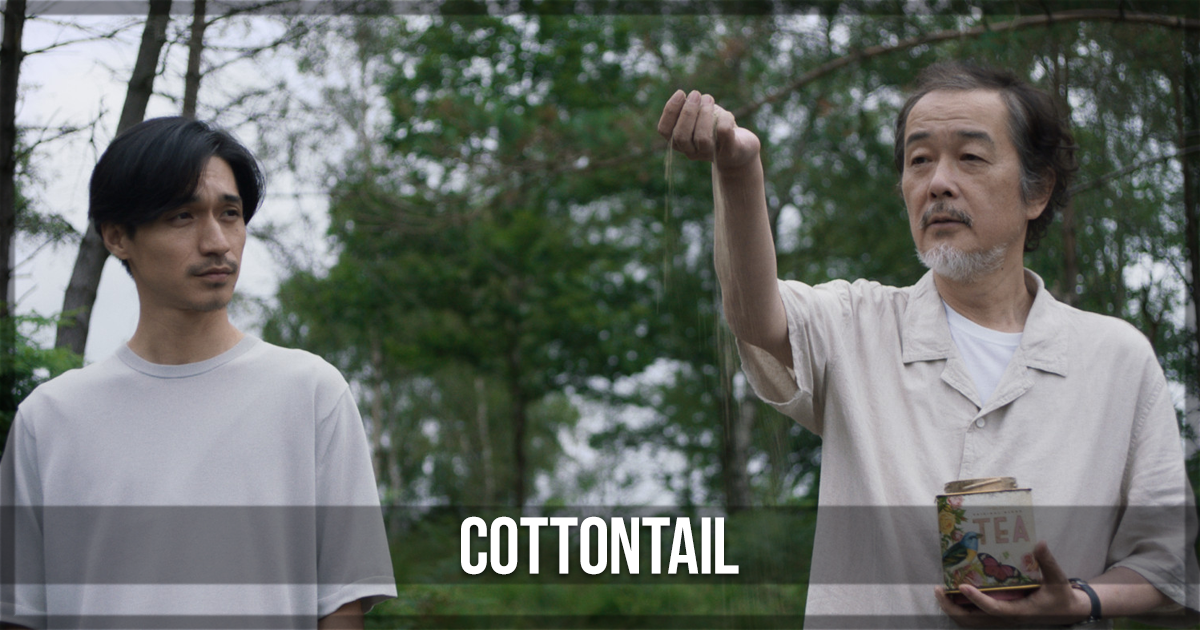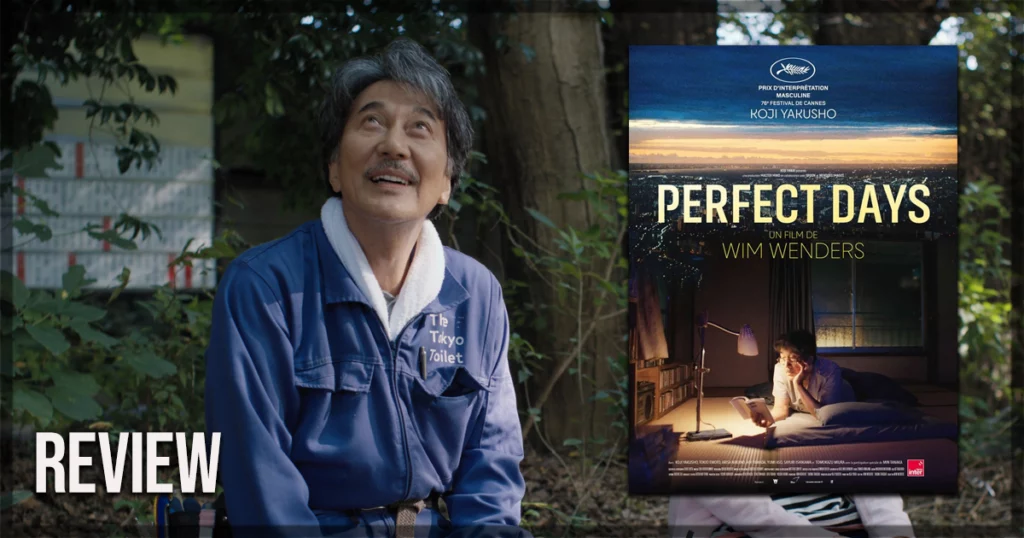An ode to family, loss, and the beauty of stories, director and writer Patrick Dickinson’s Cottontail is a quiet meditation on what it means to be part of the world after someone you love has died.
Dickinson’s narrative feature debut, the film follows Kenzaburo, played by Lily Franky, a sixty-something Japanese widower. As Kenzaburo copes with his wife Akiko’s death, his relationship with his son Toshi, played by Ryo Nishikido, stretches even thinner than its already sparse nature. At Akiko’s funeral, the father-son duo discovers that she left a letter asking them to scatter her ashes at the lake she grew up visiting: Lake Windermere in Britain.
Splattered with flashbacks of Akiko and Kenzaburo’s life together, Cottontail follows Kenzaburo as Toshi and he make the trek to England to fulfill Akiko’s wishes. Kenzaburo gets lost repeatedly, ending up in the countryside needing help from a family who also lost their matriarch. Played by real-life father and daughter Ciarán Hinds and Aoife Hinds, the pair help Kenzaburo see that what matters in life is that you’re with the people who love you – which, though slightly contrived, is done in Cottontail in a particularly interesting way.
Perfect Days, but sad
A new phase of Japanese cinema is starting to emerge. Cottontail and last year’s Perfect Days are some of the genre’s founding documents – a Constitution and Declaration of Independence, if you will. A mix of slow-paced slice-of-life cinema and lyrical moments that break up the monotony of these quiet lives, the brand of cinema is quaint, solemn – and emphasizes the quotidian elements of life. These types of films often rely on their protagonists. Where Perfect Days has Koji Yakusho’s Hirayama, Cottontail has Franky’s Kenzaburo.
Franky plays Kenzaburo with a silent despair. From the first scene, he is hunched over. His eyes are dark with bags, and his face and neck are covered with stubble. The epitome of melancholy, Franky’s performance is spot on. His clothing is decrepit, and he rarely listens to those talking around him.
More than anything, Kenzaburo is in his own world.
Much of his time is spent inside his head, flashing back to moments with Akiko. Some of them are beautiful moments of a couple, happy and deeply in love; some moments are bleak images of a dying woman and the man who loved her too much to do anything else but mourn. These recollections shadow the remnants of Kenzaburo’s life with dread. If at any moment your worst memories can pop into your brain, your life can fall apart in an instant; if you can float into the best moments in life, why live in the present?
The answer: that’s where the ones who are left reside.
Cottontail is quietly special
The film’s demure nature is what makes it astounding.
Rather than amplifying the drama like many films try to do, the film trusts the viewer to follow its subtlety. Mark Wolf’s cinematography is simple. The shots don’t call attention to themselves and fit together precisely, smoothly; you can’t see the seams in this film. Stefan Gregory’s score is meek, in a good way. It doesn’t take up much space, but the final minutes of the film are greatly aided by the ambiance the score creates.
The film is patient, waiting to reveal things – simple or deep – almost like its protagonists, and thus, its bones are its beauty. Where Kenzaburo and Toshi are typically shrouded when talking – often not talking about their feelings at all – the film converses in a similar manner. Cottontail makes you go on a quest to answer it questions; it will not tell you what it feels – or what to feel. Each moment in the film is layers deep. A conversation has three, four, infinite meanings. Of these deep layers, there is the deepest image in the film: the titular cottontail.
Down the symbolic rabbit hole with Cottontail
When she was a child, Akiko was read The Tale of Peter Rabbit by Beatrix Potter. This book – which gave way to the necklace, a symbol of Kenzaburo’s love for her throughout the film – is read to Toshi’s daughter early on in the film, and the quest to Britain soon becomes filled with glimpses of rabbits. The most cogent moment of a rabbit comes after the completion of the family’s journey.
The film ends in the hills of Britain, immediately after Akiko’s ashes are spread. Toshi’s daughter sees a rabbit and runs after it, down the hill and through the meadows. Toshi and his wife follow her, themselves trying to catch the rabbit. But, before the family gets too far away from Kenzaburo – who was standing a couple steps away from the close-knit family – Toshi turns around and asks him to join the family on their hunt.
The rabbit, a symbol of youth and vitality, is an interesting image for this film to end on. Yes, Kenzaburo is finding livelihood by reuniting with his family, but the rabbit – the picture of youth – is a strange symbol to place on this elderly man.
Here’s the big twist. That’s because the film isn’t – really – about Kenzaburo; it’s about the family as a whole. Though it does almost exclusively follow Kenzaburo, he isn’t the focus of the moments. Family is.
When he is shown alone, it’s after missing a phone call from his son or after a fight with the family. Typically, though, he is shown next to family – either his own or the family he seeks help from in the British countryside. Effectively, the film follows the family, but it’s framed through the patriarch’s perspective.
The family abides
The film is nearing a cyclical nature. Every family will have their problems to overcome, losses they need to accept. What the film tells us is that there is a way to get through these problems, and the way to do that is by loving deeply and openly.
The physical mirroring between father and son in the film’s final moments – both are in similar outfits, facial hair unkempt and outgrown – heightens this repetitive understanding of family. Few things are so flawed and so perfect as the cosmic joke that is our family. Only the people we allow to get so close can hurt us as much as a family can do, for in order to clean another, you must get dirty.
The film shows this simply. You will become battered, tired, and pained, but the joy of running after rabbits is worth the pain of how you got there, so the film says. Cottontail is not a spectacle, rather a tale that uses every element of the muted film around it to take the pain and pleasure of family to even deeper depths.
Cottontail is available to watch in limited theaters in the United States as of June 7, 2024.
Learn more about the Cottontail at the West End Films site for the title.


